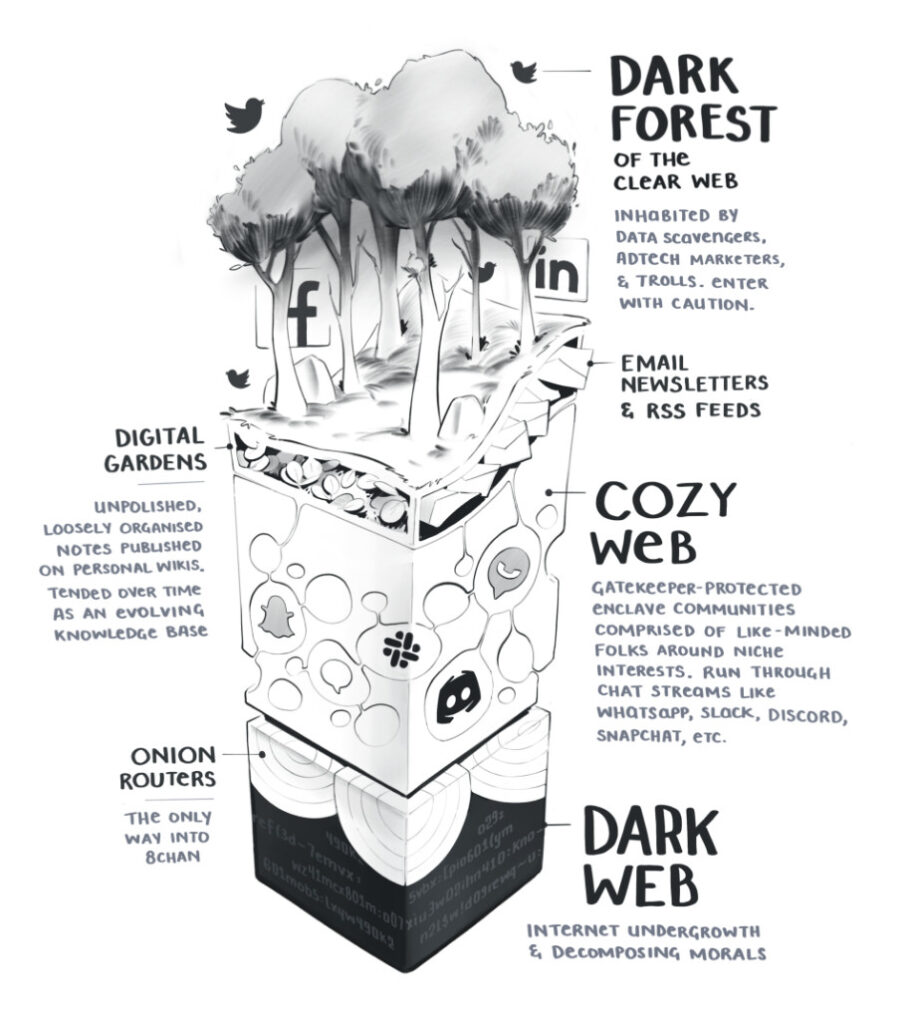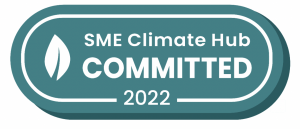Does your world feel increasingly polarised, divided and rife with disinformation and counter-narratives? Unfortunately, research from last year’s BBC R&D Foresight Report suggests that you’re not alone, nor imagining this.
Participants reported a strong sense of widespread political polarisation and increased social division, and this is linked to disinformation and a toxic online environment.
Social media is no different – respondents reported a tangible sense that the social media landscape is ‘fragmenting’ into smaller, more specialised online spaces.
This is known as the cosy web, a term used to describe a vision for a more user-friendly, ethical, and decentralised version of the web. The cosy web emphasises individual ownership of data, privacy, and fostering healthy online communities.
In this vision, there are independent websites and platforms, rather than a few dominant corporations controlling most online spaces, which feature:
- A focus on smaller, more intimate online communities based on shared interests.
- User control and ownership over personal data, content, and online identities.
- Prioritising privacy, in platform design and in norms and expectations for behaviour.
- Human-scale and accessible technologies
- Designed with user experience and digital wellbeing in mind.
- Rejection of intrusive advertising, surveillance capitalism, and attention-extraction business models.
- Designed to encourage civil discourse, empathy and genuine connection.
The era of massive platforms that deliver a ‘universal timeline’ to hundreds of millions or even billions of individuals seems to be coming to a close. Audiences are slowly walking out of this ‘dark forest’ and looking for connection and alignment in the ‘cosy web’. (Or the cozy web in US English).
Yancey Strickler, who coined the term describes The Dark Forest as a place internet users retreat into:
In response to the ads, the tracking, the trolling, the hype, and other predatory behaviors, we’re retreating to our dark forests of the internet and away from the mainstream
Maggie Appleton expounds on Strickler’s observation but also tweaks it a bit. In The Dark Forest and The Cozy Web, Appleton visualises The Dark Forest as the areas we avoid:
We create tiny underground burrows of Slack channels, Whatsapp groups, Discord chats, and Telegram streams that offer shelter and respite from the aggressively public nature of Facebook, Twitter, and every recruiter looking to connect on LinkedIn.

But how will the rise of the cosy web affect our interactions with social media?
What could the future of social media look like?
We can’t predict the future, but we can observe the changes that are happening, analyse them and even dare to make a few predictions. Based on what we have observed, our perception is that, over the next few years, we’ll slowly retract from the main platforms of the last decade, like Facebook, X and Instagram.
While general ‘passive’ usage doesn’t currently appear to be slowing, last year the Wall Street Journal reported that 61% of US adults who use social media have become more selective about when they will post, citing a lack of control over the content they see, privacy concerns, and that social media had become less ‘fun’.
This desire to retract was reported across most of the major social media platforms; X, Facebook, Instagram and TikTok.
It is also possible that audiences remain where they are, but seek safer spaces within those platforms. These smaller, more manageable digital spaces will be more closely aligned with their audience’s beliefs, interests and motivations, which may be a natural response to all the noise in the massive platforms (we are looking at you, X!).
When we talk about these spaces, we’re referring to features like Facebook & LinkedIn groups, new Close Friend features on Instagram (no longer just stories, but posts & Reels, too), and Communities on X.
Platform updates are a telling sign – features to bring like-minded people together are being actively cultivated by major platforms, and it’s no coincidence Facebook groups are seeing a resurgence.
Newcomer platforms that offer something new (or narrower) than current contenders shouldn’t be dismissed (Threads…?). We suggest you grab those usernames and handles as soon as you can – just in case.
Focus your digital marketing resources where they’ll have the biggest impact
Alongside users seeking spaces that better fit their needs, nonprofits are expected to focus their energy and resources on their ‘champion platforms’, in the face of declining organic performance.
However, reporting and analytics may uncover an opportunity to meet your audience where they want to be, rather than where they historically have been.
We suggest keeping a close eye on your target audiences, seeing how they behave, what content they engage with and which platforms – or spaces within them – they prioritise. Audience research and social listening may prove essential tools to equip you with the information you need to meet your audience in the spaces they’re most engaged. Once you have your data, it’s time to double your efforts on what delivers results for your organisation.
Bear in mind that you might soon benefit more from meeting your audiences in more interest-based, curated or intimate digital spaces that facilitate more authentic relationships than in the historically important digital spaces. Could your organisation create its own Facebook Group or LinkedIn Group, to facilitate more intimate discussions around your cause?
Planning for a changing digital landscape
Here’s a summary of what you can do to plan for a changing digital landscape.
- Register usernames on new channels
- Undertake audience research and use social listening to gain insights
- Explore managed spaces of larger platforms for opportunities, e.g. Facebook Groups and LinkedIn Groups
- Consider building your organisations presence in interest-based spaces – or finding authentic ways to tap into them
- Find out how to set a sustainable social media strategy
We’d love to come in and workshop set course through the cosy web with you. Contact the Empower team for a friendly chat and discuss your social media strategy.




